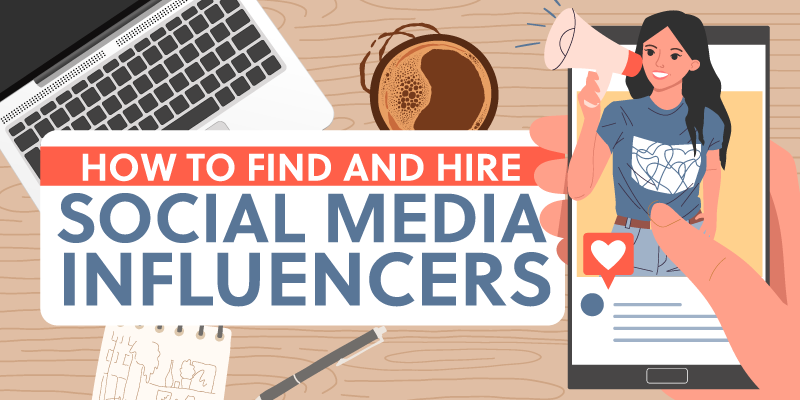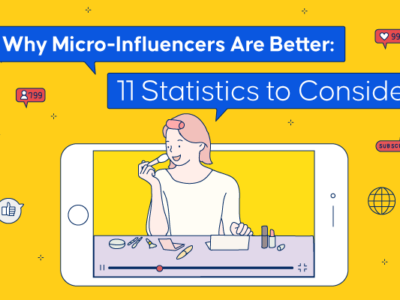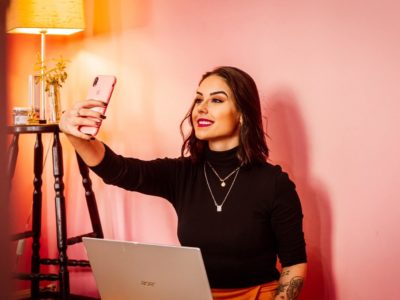The growth of social media over the last decade has not only empowered users to connect with their friends, family, and co-workers across the globe, it’s also catapulted many into stardom—whether intentionally or not.
True enough, these days, marketing your product or service wouldn’t quite be complete without tapping into what’s now known as social media influencers—people with a considerable number of followers who can convince people to do or buy things.
A Brief History of Influencer Marketing
Influencer marketing is so effective because the content is delivered by “regular people” who are relatable to a broader range of audiences. They’re not extremely pampered or wealthy like celebrities (for the most part) and they post real content on their social media feeds. That’s why 70% of teens trust influencers more than traditional celebrities.
As such, working with these social media stars won’t just boost brand awareness, but work on your expertise, authority, and trustworthiness as a brand—a SEO metric on Google frequently shortened to E-A-T.
In less than ten years, the number of searches for the term “influencer marketing” has shot up exponentially. More and more brands are hopping in on the trend, with teams allocating a dedicated budget for this customer acquisition tactic.
From less than 100 million users in 2013 to now over a billion in 2020, Instagram has become a goldmine for brands when it comes to marketing. In just three years, the platform saw around 3.6 million sponsored posts to 24.2 million in 2018.
If you’re looking to adopt this in your marketing strategy, you might be wondering where you can find influencers relevant in your industry. Well, you’re in luck, because we’re about to show you how.

How to Choose the Right Influencers
With the growing number of influencers present, it can be tough knowing who to approach. Here are some tips you can pick up.
1. Define your influencer marketing goals
Depending on the kind of campaign you’re running, you could approach one or two influencers with a huge following, or you could also tap into a handful of micro-influencers to cover a more specific reach. A micro-influencer has anywhere from 6,000 to 10,000 followers, while fully-fledged influencers can go beyond that to an average of 100,000.
You should also have clear KPIs. What will your measure(s) of success be? Will it be the number of impressions and unique accounts reached or the number of likes, comments, and shares? If you’re looking for it all, then make sure you have ballpark figures in mind to verify success.
2. Choose your social media platform
Influencer marketing doesn’t only exist on Instagram; however, it is the most popular. Still, it’s worth checking out YouTube, Facebook, Twitch, and Twitter. Don’t forget tried and tested blogs, podcasts, or even rising platforms like TikTok. Depending on your audience, these social media platforms could definitely be worth giving a shot.
3. Make a list of potential candidates
When shortlisting influencers, it’s critical to check the previous content they’ve posted to see if it matches what you’re looking for. Here are some questions you could ask for each one you’re considering:
- Are they versatile, or do they have a niche?
- Do they post often, and if so, how frequently?
- Do they regularly engage with their audience?
- What’s the ratio of their followers to those that engage with their post?
- Who is their target audience, and do they match yours?
If you can, use influencer search tools like Modash or Hypeauditor. If you don’t have a tool, try searching by hashtags or exploring your existing customer base for influencer people you can consider recruiting.
4. Choose influencers that best match your brand’s goals
After heavily considering the factors above, make sure you’re picking out people who align with your brand values and campaign objectives. If you have a good feeling about the people you’ve scouted, then it’s time to reach out and send a proposal to collaborate.
Hiring Influencers for Your Campaign
1. Reach out via their social channels
For independent influencers who don’t have multiple channels, it may be sufficient to send them a DM on Instagram or a formal email expressing your interest to connect. Introduce your brand, what your product or service is, and relate it to the influencer’s audience and content.
2. Approach the influencer via their manager or agency
Alternatively, if you’re pursuing influencers via a traditional agency or platform, you can reach out to their agents to book them as well. Just as how you would if you were messaging them personally, including the overall vision of the campaign you want to involve them in.
3. Request data from their previous campaigns to validate legitimacy
Do your due diligence and screen your influencers thoroughly, especially if you’re contacting many but only selecting a few. Ask for their portfolio and check their previous work. If they’re seasoned, they will have figures to show detailing their follower growth, audience profiles, and average reach. If you’re targeting micro-influencers, be prepared to be a bit more flexible, but you should always request for data and information about their previous work with other brands.
4. Determine the nature of the contract
Just as how you would measure different campaigns using various KPIs and metrics, don’t expect every influencer partnership to be the same. Communicate your expectations with the influencer. Have precise requirements and detail the compensation and day of the payout, and smooth out any discussions that arise in the inquiry phase of your collaboration. At this point, you should also discuss contingencies, like what happens if expectations are being met.
5. Document a legally binding contract that both parties agree on
Before starting the project, make sure that there’s a written and electronically signed contract that you can refer to anytime during the duration of the campaign. Not only is this smart, but it protects both you and your influencer from any liabilities, should any arise.
Things to Keep in Mind
- Have set goals for your campaigns – Be realistic with what you want out of your partnership with the chosen influencer(s). Having goals will keep you in touch with your expectations and help determine whether or not an influencer is effective.
- Give the influencer creative freedom – As counterintuitive as it might sound, just let the influencer do their thing. If they’ve shown the right level of professionalism during your discussions, trust that they’ll employ creative means to promote your product. Hold back from micromanaging and allow them to get creative as long as it’s on-brand.
- Find influencers who genuinely love your product – Creating brand partnerships will be easier if you tap an influencer who believes what you sell. This way, their posts come off much more genuine and authentic.
- Look out for audience engagement levels – As you let go on the execution aspect, divert your attention to the key metrics that should be satisfied. Monitor your campaign religiously.
- Build lasting connections – Manage your relationships with your influencers! Don’t consider it a done deal after one project. Staying in touch will make them vouch for your brand even more.
Building Good Influence on Social Media
Overall, taking advantage of influencers in your marketing campaigns can mean a huge boost for your brand. Don’t be afraid to experiment but be aware of the things you need to accomplish to get your project going.
With online competition ever-growing, make sure your brand stands out with the latest and best marketing practices!
If you need a boost, we’re here to help. Reach out to Spiralytics, a social media agency in the Philippines, today to learn how our social media services can build your brand!







